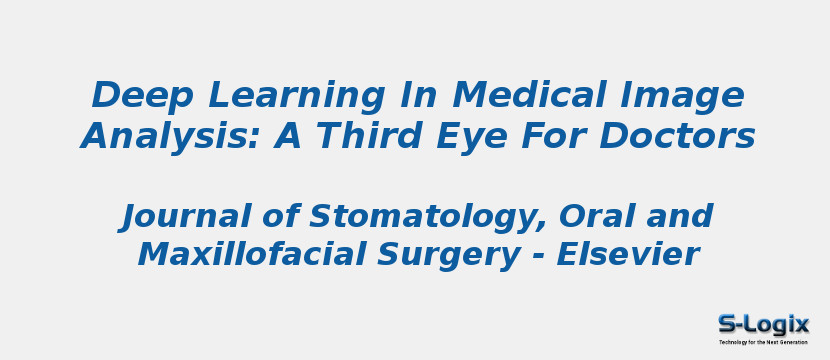Research Area: Machine Learning
Artificial intelligence (AI) in medicine is a fast-growing field. The rise of deep learning algorithms, such as convolutional neural networks (CNNs), offers fascinating perspectives for the automation of medical image analysis. In this systematic review article, we screened the current literature and investigated the following question: “Can deep learning algorithms for image recognition improve visual diagnosis in medicine?” We provide a systematic review of the articles using CNNs for medical image analysis, published in the medical literature before May 2019. Articles were screened based on the following items: type of image analysis approach (detection or classification), algorithm architecture, dataset used, training phase, test, comparison method (with specialists or other), results (accuracy, sensibility and specificity) and conclusion.We identified 352 articles in the PubMed database and excluded 327 items for which performance was not assessed (review articles) or for which tasks other than detection or classification, such as segmentation, were assessed. The 25 included papers were published from 2013 to 2019 and were related to a vast array of medical specialties. Authors were mostly from North America and Asia. Large amounts of qualitative medical images were necessary to train the CNNs, often resulting from international collaboration. The most common CNNs such as AlexNet and GoogleNet, designed for the analysis of natural images, proved their applicability to medical images. CNNs are not replacement solutions for medical doctors, but will contribute to optimize routine tasks and thus have a potential positive impact on our practice. Specialties with a strong visual component such as radiology and pathology will be deeply transformed. Medical practitioners, including surgeons, have a key role to play in the development and implementation of such devices.
Keywords:
Author(s) Name: A. Fourcade, R.H. Khonsari
Journal name: Journal of Stomatology, Oral and Maxillofacial Surgery
Conferrence name:
Publisher name: Elsevier
DOI: 10.1016/j.jormas.2019.06.002
Volume Information: Volume 120, Issue 4, September 2019, Pages 279-288
